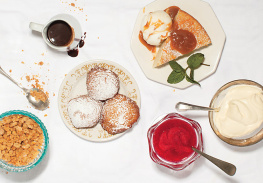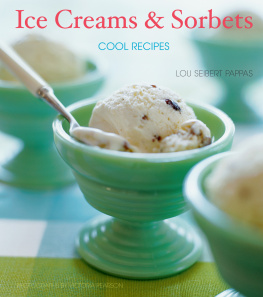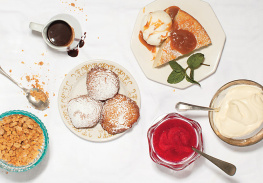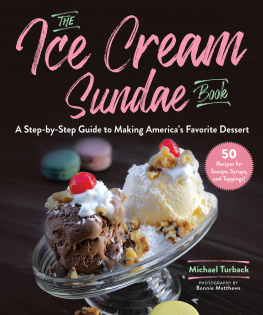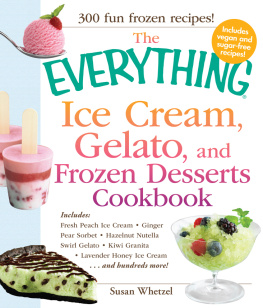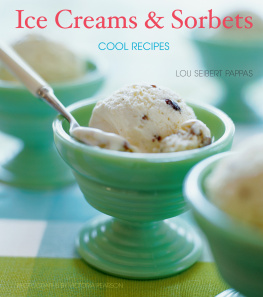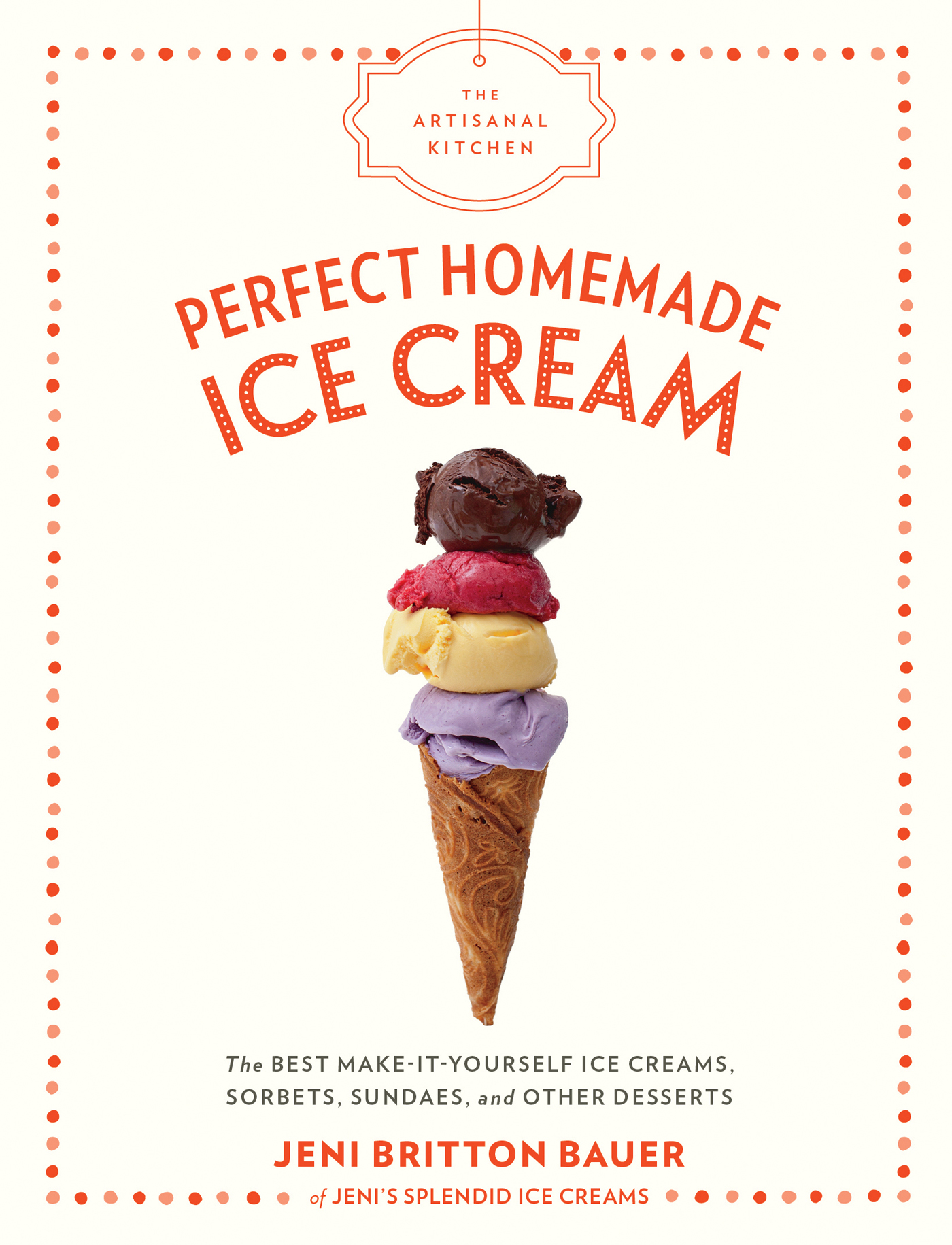Also in This Series
The Artisanal Kitchen: Perfect Pasta
The Artisanal Kitchen: Perfect Pizza at Home
The Artisanal Kitchen: Vegetables the Italian Way
The Artisanal Kitchen: Holiday Cocktails
The Artisanal Kitchen: Holiday Cookies
The Artisanal Kitchen: Party Food
The Artisanal Kitchen: Baking for Breakfast
The Artisanal Kitchen: Party Cakes
The Artisanal Kitchen: Sweets & Treats
The Artisanal Kitchen: Barbecue Rules


The best make-it-yourself ice creams, sorbets, sundaes, and other desserts
Jeni Britton Bauer

ARTISAN | NEW YORK
Contents
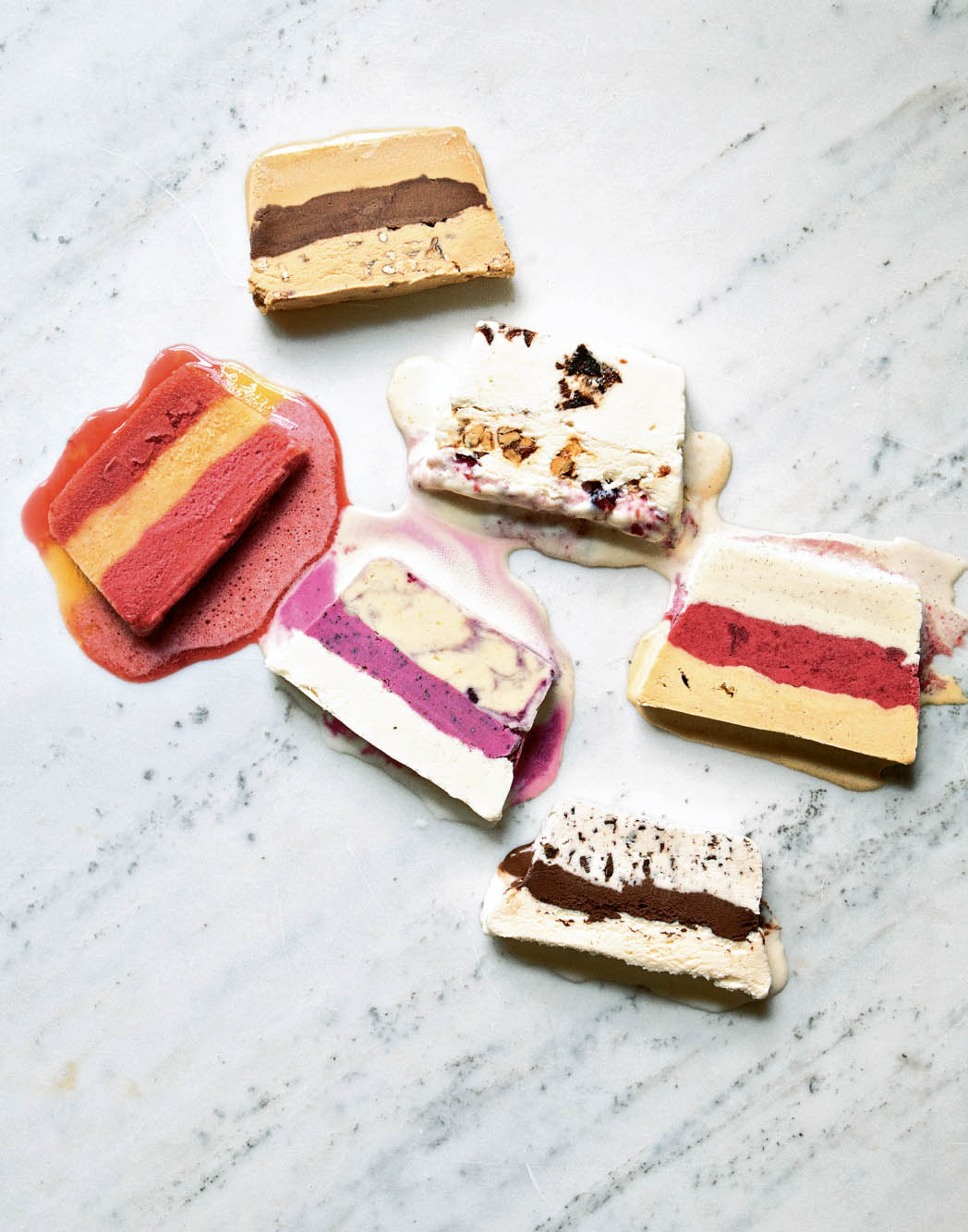
Introduction
T he best ice cream in the world has a hard, sturdy body and a fine texture. It can be rolled into a scoop, perched on top of a cone, and savored slowly, even on the hottest days of the year. It is high in butterfat and low in air, and most important, its as delicious as the day is long.
The recipes youll find in this book are as much about flavor and finish as they are about texture and body. I never used to be a fan of homemade ice cream; I usually found it icy, goopy, soupy, crumbly, eggy, gritty, or too buttery. So a few years ago, I set out to create a better ice cream recipe for home machines.
All of my ice creams are a riff on one base recipe that I have tinkered with over many years to perfect. The result: I promise that you cant get better ice cream anywhere else on the planet than right from your own kitchen.
Every recipe was created and tested over and over again using only home equipment. I have included specific information about equipment, ingredients, and techniques, so you will be armed with everything you need to make the most splendid ice creams you have ever tasted.
The Quick Take
Heres an overview of the four steps youll take to make any ice cream flavor in this book.
Twenty-four hours before you want to make the ice cream, wash the canister, dry it well, and place it in the coldest part of the freezer. Do not remove it until you are ready to pour the chilled cream into it.
The Steps
PREP THREE BOWLS In a small bowl, mix about 2 tablespoons of milk with the cornstarch to make a slurry. In a medium bowl, add the salt and room-temperature cream cheese and whip all the bumps out. In a large bowl, make an ice bath (heavy on the ice) and set aside.
COOK Pour the milk, cream, sugar, and corn syrup into a saucepan. Bring to a boil over medium-high heat and set a timer for precisely 4 minutesthe timing is critical. Turn off the heat and whisk in the cornstarch slurry. Return to a boil to slightly thicken.
CHILL Whisk the hot milk mixture into the cream cheese. Do this a little bit at a time so that you can whip out any lumps of cream cheese. Pour the hot ice cream base into a ziplock bag and seal. Submerge in the ice bath until very cold.
FREEZE Cut the corner off the bag, pour the chilled base into the ice cream machine, and turn on the machine. When finished, transfer to a storage container and freeze until firm, about 4 hours.
Advance Prep
Some ice creams will call for ingredients that must be made in advance. Recipes for roasted nuts, sauces, candies, and cakes can be found in . Have these components chilled and ready to go before beginning the process.
Frozen yogurts require the advance prep step of draining the yogurt for about 8 hours. Its easy to do and creates a much smoother, silkier frozen yogurt. Put a sieve over a bowl and place two layers of cheesecloth over the sieve. Plop a whole quart of low-fat yogurt on top and let it sit in your refrigerator for about 8 hours.
HOW TO TELL WHEN YOUR ICE CREAM IS DONE For Ice Creams The ice cream is finished at the exact moment when the machine isnt freezing the ice cream anymore; the ice cream will begin to pull away from the sides (about 25 minutes). For Sorbets Sorbets are done when they achieve the consistency of a thick smoothie; they should be frozen enough to be just barely pourable. If you fully freeze sorbets, too much air will be whipped in and they will become fluffy and crumbly.
SWIRLING IN A VARIEGATE AND STORING YOUR ICE CREAM If you are packing the ice cream with a sauce (or variegate), alternate layers, creating pockets with the sauce. Be sure to put a bit on the bottom of the container and reserve some to put on the top of the ice cream. If you are adding chunks, layer them in evenly as you go.
Then, working quickly, pack the ice cream into a container, cover with parchment or wax paper to seal out air, and let it harden in your freezer for at least 4 hours.
SERVE When you remove the ice cream from the freezer, let it sit and relax for 5 to 10 minutes before you scoop and serve itit doesnt need to melt, but it does need to thaw slightly. Ideally, serve and eat it while its quite firm but pliable and you are able to easily roll it into a ball. Once youve scooped it, return any remaining ice cream to the freezer. If the ice cream has melted too much at room temperature, refreezing it will result in an ice cream that is too icy.
Ingredients & Equipment
Ice cream making requires attention to the smallest detailsthe type of milk you use, even the kind of saucepan you choose. Certain variables can throw off the texture and flavor of anything you make. That said, for the most part, the recipes here are easy, and in no time, you will be creating artisan ice creams at home!
Ingredients
DAIRY PRODUCTS Use whole milk and heavy cream. If you have access to nonhomogenized, grass-pastured milk, you will be able to achieve the best flavor, but you will have to take the extra step to homogenize the mixture (see ).
When yogurt is called for, we use low-fat plain yogurt, which is strained to get rid of excess liquid. This method produces creamier frozen yogurt than using thicker Greek-style yogurt.
A bit of cream cheese adds body to the ice cream. I prefer Organic Valley cream cheese, because it is a true cultured cheese and has a clean dairy flavor and minimal natural thickeners, but any full-fat cream cheese will work.
CHOCOLATE The better the quality, the more complex the flavor. You can choose whatever chocolate you like when making chocolate flecks for ice cream, but when it comes to chocolate ice cream, use a chocolate that has at least 60% cacao. Or go much higher, even when making milk chocolate, because adding milk and cream softens the flavor of any chocolate considerably. We live in a world full of superb chocolates: Askinosie, Valrhona, Green & Blacks, Ghirardelli, El Rey, and Callebaut are all great options.
EXTRACTS & FLAVORINGS Extracts and flavorings are invaluable in ice cream making because they are potent in very small amounts and therefore adding them wont affect the texture of the ice cream. I almost always use pure natural flavorings, which are made by steeping herbs or spices in a carrier like alcohol or oil. Or go straight to the source and use undiluted essential oils, which are volatile, concentrated scents from certain parts of plants, such as citrus zest, basil leaves, cinnamon bark, or coriander seeds. Vanilla extract is the most common. We also seem to find infinite uses for the natural butter flavoring from Frontier Natural Products (it is actually made from butter solids; see ).


